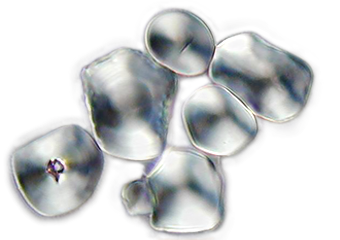Dust particulate analysis, air [DP-A]
Published: March 24th, 2023
Revised: March 25th, 2023
Spore trap sampling involves collecting airborne particles on a filter membrane or adhesive-coated slide by drawing air through or over the collection medium, respectively. The collection medium is then analyzed by transmitted light microscopy, usually at 600–1000× magnification. A number of different collection devices may be used for spore trap sampling of which the most common are 1) slit impactors such as the Allergenco-D or Air-O-Cell cassette, and 2) mixed cellulose ester membrane (MCEM) filters. Sample collection for this test is described greater detail in Spore trap analysis [ST].
The normally high minute-to-minute variability in levels of airborne spores greatly limits the utility of short-term quantitative air sampling data. This large intrinsic source of variation also minimizes the importance of counting method as a significant source of error. The most critical source of error in spore trap analysis qualitative, involving the identification of captured particles. Our analysis uses a combination of light microscopy and differential interference microscopy to characterize particle morphology and provide a presumptive identification.
This test is typically used as an add-on to Spore trap analysis [ST], to provide a more detailed characterization of captured airborne particles; however, it can be carried out as a stand-alone test.
Laboratory code: DP-A
Service options




